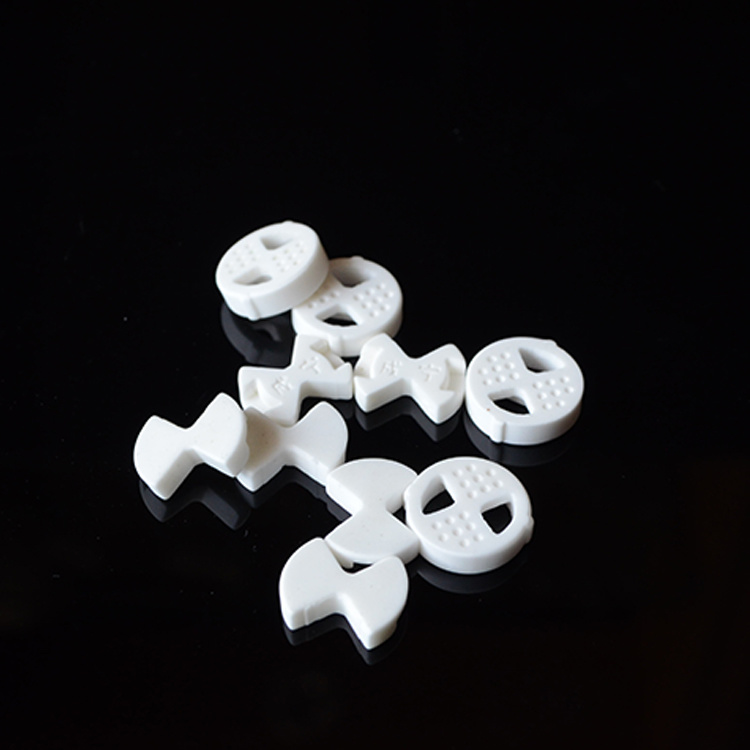
Choosing the Right Lab Crucible for Accurate Gold Assaying
Time:
2023-09-12 09:40
Source:
Table of Contents:
1. Introduction
2. Crucible Materials for Gold Assaying
3. Selecting the Appropriate Crucible Size
4. Crucible Features for Accurate Gold Assaying
5. Crucible Preparation and Handling
6. Essential Safety Considerations
7. Frequently Asked Questions (FAQs)
7.1. What is the purpose of a crucible in gold assaying?
7.2. Can I reuse crucibles for gold assaying?
7.3. Are there specific crucibles for different gold assay methods?
7.4. How do I clean a crucible after gold assaying?
7.5. Can I use crucibles made of alternative materials for gold assaying?
8. Conclusion
1. Introduction
When it comes to accurate gold assaying, choosing the right lab crucible is paramount. A lab crucible is a vessel used to contain and heat substances during the gold testing process. This article will guide you through the essential factors to consider when selecting a crucible for gold assaying, ensuring precise and reliable results.
2. Crucible Materials for Gold Assaying
The choice of crucible material plays a crucial role in accurate gold assaying. Common materials include graphite, ceramic, and quartz. Graphite crucibles offer excellent resistance to high temperatures and chemical reactions, making them suitable for most gold assaying applications. Ceramic crucibles are known for their durability and resistance to thermal shock, but they may not withstand extremely high temperatures. Quartz crucibles are highly inert and can withstand high temperatures, making them ideal for certain gold assay methods. Consider the specific needs of your gold assaying process when selecting the crucible material.
3. Selecting the Appropriate Crucible Size
The size of the crucible is another important consideration. It should be large enough to hold the required amount of gold sample and any additional substances used in the assay, such as flux or reagents. However, an excessively large crucible may lead to inefficiency and inaccuracies in the heat transfer. Assess the quantity of gold you typically assay and choose a crucible size that accommodates the sample comfortably without compromising accuracy.
4. Crucible Features for Accurate Gold Assaying
Apart from material and size, certain features can enhance the accuracy of gold assaying. Look for crucibles with a pouring lip or spout to facilitate controlled pouring of molten gold. Inspect the crucible's lid or cover for a snug fit to prevent any loss of gold or contamination. Some crucibles have handles or grips for easy handling while hot, minimizing the risk of accidents. Consider these features based on your specific requirements and workflow.
5. Crucible Preparation and Handling
To ensure accurate gold assaying, proper preparation and handling of the crucible are essential. Before use, cleanse the crucible to remove any contaminants or residues that could affect the assay results. Follow the manufacturer's instructions regarding pre-heating or seasoning the crucible if necessary. During the assay, handle the crucible with care to avoid unnecessary variation in temperature or damage to the crucible.
6. Essential Safety Considerations
Working with crucibles for gold assaying involves high temperatures and potentially hazardous substances. Prioritize safety by wearing appropriate personal protective equipment, such as heat-resistant gloves and eye protection. Use heat-resistant tools and equipment to handle the crucible, and ensure proper ventilation in the assay area to minimize exposure to fumes. Familiarize yourself with the specific safety guidelines provided by the crucible manufacturer.
7. Frequently Asked Questions (FAQs)
7.1. What is the purpose of a crucible in gold assaying?
A crucible serves as a container to hold the gold sample during the assay process. It withstands high temperatures and provides a controlled environment for accurate determination of gold content.
7.2. Can I reuse crucibles for gold assaying?
Reusing crucibles is generally not recommended for accurate gold assaying. Residual materials or contamination from previous assays can affect the results. It is best to use new crucibles for each assay.
7.3. Are there specific crucibles for different gold assay methods?
Yes, certain gold assay methods may require specific crucibles to ensure accurate results. For example, cupellation assays may employ bone ash or magnesia cupels, while fire assay methods may use different crucible materials based on the sample composition.
7.4. How do I clean a crucible after gold assaying?
Cleaning a crucible after gold assaying involves removing any remaining gold or residues. Use appropriate cleaning agents and follow the manufacturer's instructions. If necessary, heat the crucible to burn off any remaining substances.
7.5. Can I use crucibles made of alternative materials for gold assaying?
While graphite, ceramic, and quartz are commonly used, there are alternative crucible materials available. However, it is crucial to ensure that the chosen material is compatible with the gold assay method and does not introduce any unwanted impurities.
8. Conclusion
Choosing the right lab crucible is vital for accurate gold assaying. By considering factors such as crucible material, size, and features, you can optimize your gold testing process and obtain precise results. Remember to prioritize safety and handle the crucible with care. Selecting the appropriate crucible will contribute to the overall accuracy and reliability of your gold assaying endeavors.
1. Introduction
2. Crucible Materials for Gold Assaying
3. Selecting the Appropriate Crucible Size
4. Crucible Features for Accurate Gold Assaying
5. Crucible Preparation and Handling
6. Essential Safety Considerations
7. Frequently Asked Questions (FAQs)
7.1. What is the purpose of a crucible in gold assaying?
7.2. Can I reuse crucibles for gold assaying?
7.3. Are there specific crucibles for different gold assay methods?
7.4. How do I clean a crucible after gold assaying?
7.5. Can I use crucibles made of alternative materials for gold assaying?
8. Conclusion
1. Introduction
When it comes to accurate gold assaying, choosing the right lab crucible is paramount. A lab crucible is a vessel used to contain and heat substances during the gold testing process. This article will guide you through the essential factors to consider when selecting a crucible for gold assaying, ensuring precise and reliable results.
2. Crucible Materials for Gold Assaying
The choice of crucible material plays a crucial role in accurate gold assaying. Common materials include graphite, ceramic, and quartz. Graphite crucibles offer excellent resistance to high temperatures and chemical reactions, making them suitable for most gold assaying applications. Ceramic crucibles are known for their durability and resistance to thermal shock, but they may not withstand extremely high temperatures. Quartz crucibles are highly inert and can withstand high temperatures, making them ideal for certain gold assay methods. Consider the specific needs of your gold assaying process when selecting the crucible material.
3. Selecting the Appropriate Crucible Size
The size of the crucible is another important consideration. It should be large enough to hold the required amount of gold sample and any additional substances used in the assay, such as flux or reagents. However, an excessively large crucible may lead to inefficiency and inaccuracies in the heat transfer. Assess the quantity of gold you typically assay and choose a crucible size that accommodates the sample comfortably without compromising accuracy.
4. Crucible Features for Accurate Gold Assaying
Apart from material and size, certain features can enhance the accuracy of gold assaying. Look for crucibles with a pouring lip or spout to facilitate controlled pouring of molten gold. Inspect the crucible's lid or cover for a snug fit to prevent any loss of gold or contamination. Some crucibles have handles or grips for easy handling while hot, minimizing the risk of accidents. Consider these features based on your specific requirements and workflow.
5. Crucible Preparation and Handling
To ensure accurate gold assaying, proper preparation and handling of the crucible are essential. Before use, cleanse the crucible to remove any contaminants or residues that could affect the assay results. Follow the manufacturer's instructions regarding pre-heating or seasoning the crucible if necessary. During the assay, handle the crucible with care to avoid unnecessary variation in temperature or damage to the crucible.
6. Essential Safety Considerations
Working with crucibles for gold assaying involves high temperatures and potentially hazardous substances. Prioritize safety by wearing appropriate personal protective equipment, such as heat-resistant gloves and eye protection. Use heat-resistant tools and equipment to handle the crucible, and ensure proper ventilation in the assay area to minimize exposure to fumes. Familiarize yourself with the specific safety guidelines provided by the crucible manufacturer.
7. Frequently Asked Questions (FAQs)
7.1. What is the purpose of a crucible in gold assaying?
A crucible serves as a container to hold the gold sample during the assay process. It withstands high temperatures and provides a controlled environment for accurate determination of gold content.
7.2. Can I reuse crucibles for gold assaying?
Reusing crucibles is generally not recommended for accurate gold assaying. Residual materials or contamination from previous assays can affect the results. It is best to use new crucibles for each assay.
7.3. Are there specific crucibles for different gold assay methods?
Yes, certain gold assay methods may require specific crucibles to ensure accurate results. For example, cupellation assays may employ bone ash or magnesia cupels, while fire assay methods may use different crucible materials based on the sample composition.
7.4. How do I clean a crucible after gold assaying?
Cleaning a crucible after gold assaying involves removing any remaining gold or residues. Use appropriate cleaning agents and follow the manufacturer's instructions. If necessary, heat the crucible to burn off any remaining substances.
7.5. Can I use crucibles made of alternative materials for gold assaying?
While graphite, ceramic, and quartz are commonly used, there are alternative crucible materials available. However, it is crucial to ensure that the chosen material is compatible with the gold assay method and does not introduce any unwanted impurities.
8. Conclusion
Choosing the right lab crucible is vital for accurate gold assaying. By considering factors such as crucible material, size, and features, you can optimize your gold testing process and obtain precise results. Remember to prioritize safety and handle the crucible with care. Selecting the appropriate crucible will contribute to the overall accuracy and reliability of your gold assaying endeavors.
lab crucible for gold assaying

